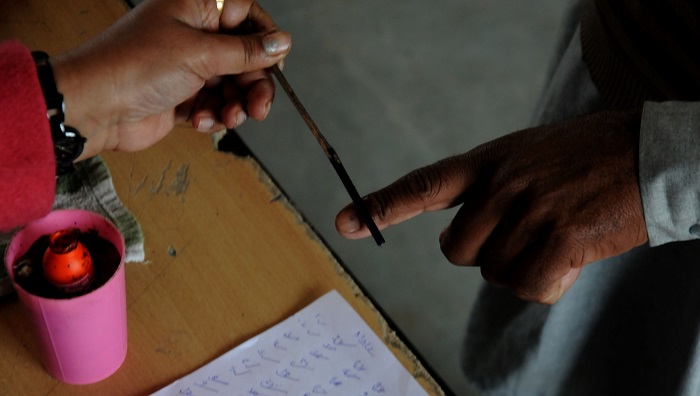Lucknow, Voting began for eight key Lok Sabha seats in western Uttar Pradesh on Thursday in the first phase of the seven-phased elections.
A total of around 1.5 crore voters from Saharanpur, Kairana, Muzaffarnagar, Bijnor, Meerut, Baghpat, Ghaziabad and Gautam Buddha Nagar started polling at 7 a.m. and will continue till 5 p.m.
People were seen queuing up outside polling stations way ahead of the process kicking off. Many voters in Noida in Gautam Buddha Nagar at a polling booth told IANS, they were trying to finish off before the April heat start scorching down.
Packed choc-o-bloc, the polling station in Modern School, saw a huge crowd of voters were seen jostling with security personnel confirming personal details and rushing off to cast their votes, as many were scheduled for their work. There were very few auto rickshaws to be seen on the road.
Chief Electoral Officer L. Venkatesh Lu said in order to make the process free, fair and transparent CCTV and drones were being used in most of the areas.
There are 1,581 digital cameras, 816 web cameras and 1,741 web cameras being used, Lu said.
Thursdays voters in the state account for almost 10.45 per cent of the total over 14 crore voters who will poll for all the 80 Lok Sabha seats from Uttar Pradesh, electorally the largest state.
The first phase of Uttar Pradesh polling is crucial as any polarisation in the western part — as seen during the 2014 Lok Sabha elections — might affect the final tally.
Three Union Ministers — Gen V.K. Singh (Ghaziabad), Satyapal Singh (Baghpat) and Mahesh Sharma (Gautam Buddha Nagar) are in the fray as is Rashtriya Lok Dal chief Ajit Singh (Muzaffarnagar) and his son Jayant Chaudhary (Bagpat).
The eight constituencies have 1,50,65,682 electors including 82,24,835 men and 68,39,833 women electors. Of these eight seats, Ghaziabad is the largest parliamentary constituency with 26,56,779 electors and Baghpat is the smallest one with 1,592,297 electors.
The data sourced from EC website shows that in previous General Election of 2014, there were a total of 1,39,04,381 electors in these eight parliamentary constituencies. This means an increase of 11,61,301 (8.35 per cent) electors since then.










